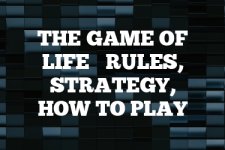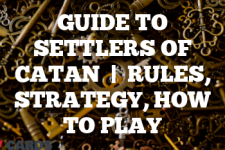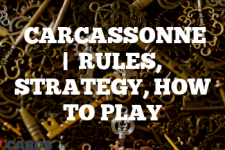Simon (board game): Rules, Instructions, Winning Strategies & How to Play the Game of Memory and Speed
Introduction
Simon is a classic electronic game of memory skill that was invented by Ralph H. Baer and Howard J. Morrison, with software programming by Lenny Cope. The device creates a series of tones and lights and requires a user to repeat the sequence. If the user succeeds, the series becomes progressively longer and more complex. Once the user fails or the time limit runs out, the game is over.

The original version of Simon was launched in 1978 at Studio 54 in New York City and became an immediate success. It became a pop culture symbol of the 1980s (I can remember many of my younger colleagues playing them) and continues to be a popular game today. The game requires a Simon game unit and is typically played solo, although there are versions that allow for multiple players.
Quick Tip
One quick tip to win at Simon is to create a mental story or pattern to remember the sequences. This can help you recall the sequences more easily and improve your game performance.
Rules for playing Simon (board game)
- The game starts by pressing the power switch to turn on the Simon game unit.
- The unit will produce a sequence of lights and sounds. The player must repeat this sequence by pressing the corresponding buttons on the unit.
- If the player successfully repeats the sequence, the unit will repeat the sequence with an additional step.
- The game continues in this manner, with the sequence becoming progressively longer and more complex.
- If the player fails to repeat the sequence correctly or within the time limit, the game ends.
There are no official ‘house rules’ for Simon as the game is typically played solo and the rules are set by the game unit itself. However, players can create their own variations of the game for added challenge or to accommodate multiple players.
How to Play Simon (board game)
Setup
The setup for Simon is straightforward. Simply turn on the Simon game unit and wait for it to produce the first sequence of lights and sounds.
Gameplay
The gameplay for Simon involves repeating the sequences of lights and sounds produced by the game unit. The player must press the corresponding buttons on the unit in the correct order to repeat the sequence. The game becomes more challenging as the sequences become longer and more complex.
End of the Game
The game ends when the player fails to repeat the sequence correctly or within the time limit. The game unit will produce a distinctive sound to indicate the end of the game.
How to Win at Simon (board game)
Winning at Simon requires a combination of memory and speed. The player must be able to recall the sequences of lights and sounds and repeat them accurately and quickly. Here are some strategies to help you improve your Simon game:
- Practice regularly. Like any skill, your memory and speed can improve with regular practice.
- Create a mental story or pattern to remember the sequences. This can help you recall the sequences more easily.
- Stay calm and focused. Stress and distraction can impair your memory and slow down your reaction time.
- Take breaks. Continuous play can lead to fatigue and decreased performance. Taking short breaks can help you maintain your focus and energy.
Best Strategies for playing Simon (board game)
The best strategies for playing Simon involve improving your memory and speed. Here are some strategies to help you excel at the game:
- Practice regularly. The more you play, the better you will become at remembering the sequences and reacting quickly.
- Create a mental story or pattern to remember the sequences. This can make the sequences more memorable and easier to recall.
- Stay calm and focused. Avoid distractions and keep your mind on the game.
- Take breaks. Continuous play can lead to fatigue and decreased performance. Taking short breaks can help you maintain your focus and energy.
Scenarios for Simon (board game)
Playing Simon can present various scenarios that require different strategies. Here are some common scenarios and how to handle them:
- You forget the sequence: If you forget the sequence, try to recall the mental story or pattern you created. If you still can’t remember, guess the next step. It’s better to make a guess than to let the time run out.
- You press the wrong button: If you press the wrong button, the game will end. However, use this as a learning experience. Try to figure out why you made the mistake and how you can avoid it in the future.
- You’re feeling stressed or distracted: If you’re feeling stressed or distracted, take a break. Clear your mind before you continue playing.
Frequently Asked Questions about playing Simon (board game)
- Q: How long does a game of Simon last?
A: The length of a game of Simon can vary depending on the player’s memory and speed. The game continues until the player fails to repeat the sequence correctly or within the time limit. - Q: Can more than one person play Simon?
A: The original version of Simon is designed for solo play. However, there are versions of the game that allow for multiple players. - Q: How can I improve my Simon game?
A: You can improve your Simon game by practicing regularly, creating a mental story or pattern to remember the sequences, staying calm and focused, and taking breaks. - Q: What happens if I press the wrong button?
A: If you press the wrong button, the game will end. However, use this as a learning experience. Try to figure out why you made the mistake and how you can avoid it in the future. - Q: Can I pause the game?
A: The original version of Simon does not have a pause feature. However, some versions of the game may have this feature.
External Links
For more information about Simon, visit the official game website here.

Eve Brownlee was a gamer before gaming communities on the internet were a thing. Eve grew up playing traditional, standard deck card games like Rummy and Bezique, taking an interest in the classics Backgammon and Chess. Parlor card games like Bridge continue to keep Eve active in the community. After a long career, primarily in horticulture for USDA in Maryland, Eve now travels and writes on The Pineapple (pineapples.info) and contributes to Quora/Pinterest topics. Contact Eve via email.



